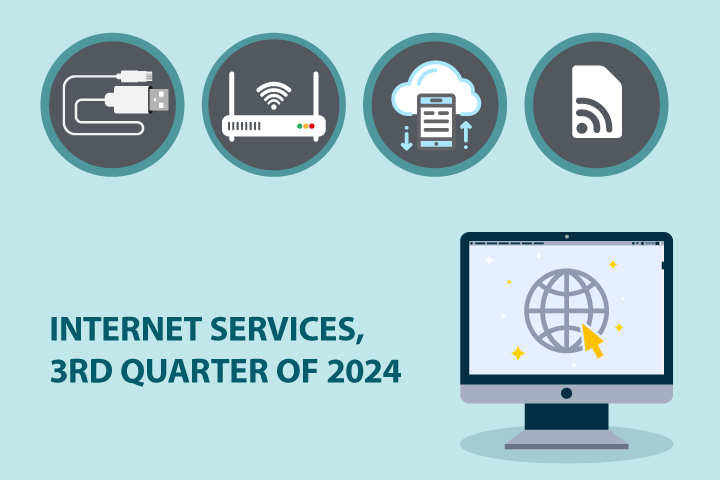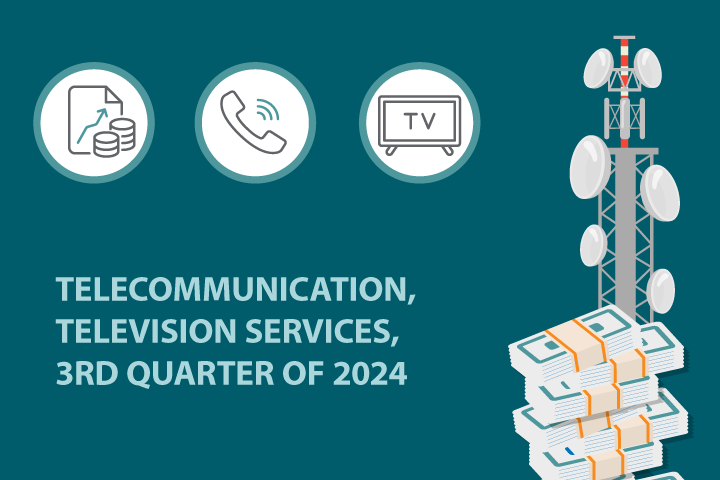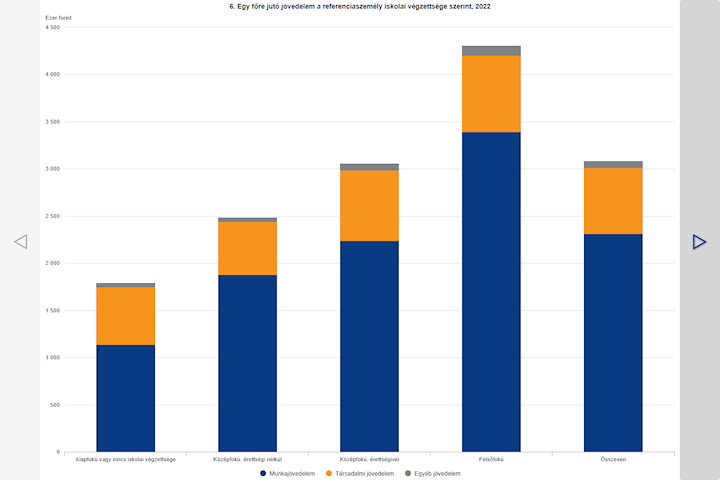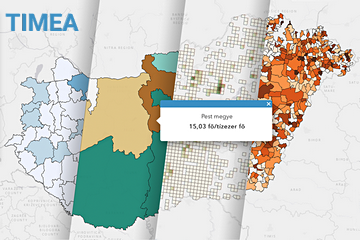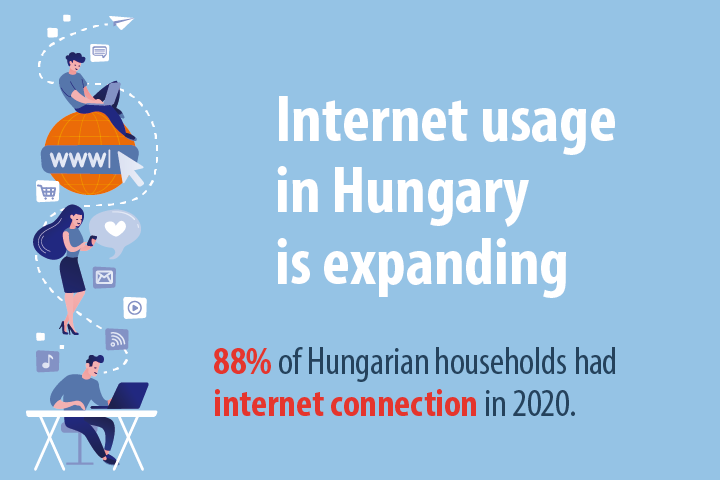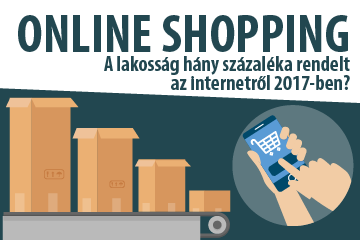Information, communication
Info-communications statistics covers the field of usage of information and communication technologies, their impact on the society. Its three main areas are data on households, enterprises and the public sector. For instance, data regarding access and use of ICT equipment, ICT infrastructure, telecommunication networks, electronic communication, e-administration, e-commerce, broadband-spreading belong to this topics of this subject matter.
Key figures
Share of information, communication in gross value added
Indicator description
Share of the information, communication section in the gross value added of the national economy, calculated at current base price.
Source of data:
Summary Tables (STADAT)
Last data for period: 2023
Number of mobile phone subscriptions per 100 inhabitants
Indicator description
Number of active, callable SIM cards on the last day of the given period per 100 inhabitants.
Source of data:
Summary Tables (STADAT)
Last data for period: Q4 2024
Number of fixed broadband internet subscriptions per 1000 inhabitants
Indicator description
Number of fixed broadband internet subscriptions at the end of the given period per 1000 inhabitants.
Source of data:
Summary Tables (STADAT)
Last data for period: 2024
Proportion of people using public administration portals for e-contact
Indicator description
Proportion of enterprises employing ICT specialists in enterprises using computers.
Source of data:
Summary Tables (STADAT)
Last data for period: 2024
Featured
Internet services, 3rd quarter of 2024
The number of fixed-line internet services subscriptions surpassed by 2.1% the one year earlier data in the 3rd quarter of 2024, due to the 8.1% increase of the optical segment. Packages offering at least 500 Mbit/s download speed reached 22% of all subscriptions. Fixed-line internet download traffic was 3,9%, mobile data traffic 21% higher than in the same period of 2023.
Telecommunications, television services, 3rd quarter 2024
In regard to telecommunication services close to HUF 338 billion revenue has been realised at service providers in the 3rd quarter of 2024, 58% of this coming from mobile voice and mobile internet services. The average time for fixed line calls stable (nearly 6 minutes), while mobile calls increased by 2.7% compared to the same period of the previous year.
Telecommunications, television services, 3rd quarter 2024
In regard to telecommunication services close to HUF 338 billion revenue has been realised at service providers in the 3rd quarter of 2024, 58% of this coming from mobile voice and mobile internet services. The average time for fixed line calls stable (nearly 6 minutes), while mobile calls increased by 2.7% compared to the same period of the previous year.
Snapshots, 2023 - Digital economy
The number of fixed connection internet subscriptions in Hungary came close to 3.6 million in 2023, increasing by 1.3% year-on-year. The growth has been impacted by the 12% rise in the optical group. Download data traffic grew by 25%, the upload one by 6.0%, both reaching record high values. The number of SIM cards for mobile phone and/or mobile internet services – continuing the previous years’ expansion – came close by the end of 2023 to 14.2 million.
Snapshots, 2023 - Digital society
The use of infocommunication devices by households and people in Hungary, based on the majority of main indices, increased in 2023, year-on-year. Broadband internet was present in 93% of households, 88% of the population aged 16-74 used the internet on a daily basis. The use of ICT devices grew in the other segment of the digital society, the administration one, too, digital difference among state administration and local governments continued to shrink.
Hungary, 2023
Geopolitical tensions continued to overshadow economic developments in 2023, with the gross domestic product falling by 0.9%. Inflationary pressures gradually eased, but the 17.6% annual increase in consumer prices led to a decline in real earnings and consumption, and negatively affected investment decisions. Despite the economic difficulties, employment has reached a record high. In 2023, the number of deaths and births continued to fall, in addition to the decrease in the number of women of childbearing age.
Related themes
Methodological information
Publications |
Released |
|---|---|
| Hungary 1st-3rd quarters of 2024 | 09/01/2025 |
| Regional Statistical Yearbook of Hungary, 2023 | 27/11/2024 |
| Hungary, 1st semester of 2024 | 14/10/2024 |
| Statistical Yearbook of Hungary, 2023 | 29/08/2024 |
| Snapshots, 2023 – Digital economy | 23/08/2024 |
| Snapshots, 2023 – Digital society | 19/07/2024 |
| Hungary, 2024 Q1 | 26/08/2024 |
| Hungary, 2023 | 27/06/2024 |
| Statistical Pocketbook of Hungary, 2023 | 27/05/2024 |
| Hungary, quarters 1-3 of 2023 – On the path of disinflation | 10/01/2024 |
| Regional Statistical Yearbook of Hungary, 2022 | 17/01/2024 |
| Hungary, 1st semester of 2023 – disinflation started | 19/10/2023 |
| Statistical Yearbook of Hungary, 2022 | 23/11/2023 |
| Hungary, 2023 Q1 | 30/08/2023 |
| Statistical Pocketbook of Hungary, 2022 | 14/06/2023 |
| Hungary, 2022 | 28/06/2023 |
| Hungary in figures, 2022 | 11/07/2023 |
| Hungary, Quarter 3 2022 | 06/02/2023 |
| Regional Statistical Yearbook of Hungary, 2021 | 10/01/2023 |
Release and revision calendarPublication repertory
